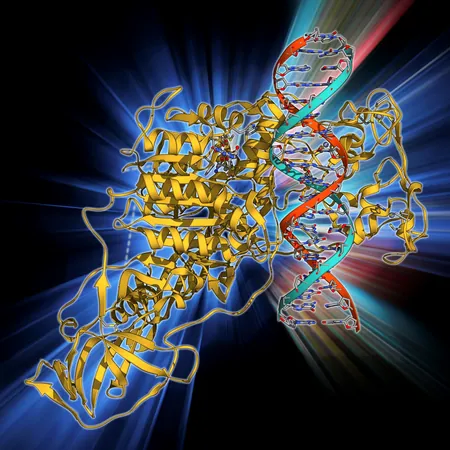
New Breakthrough in Measuring Biological Aging Unveils Distinct Cell-Type Insights
2025-01-02
Author: Sarah
Introduction
Recent advancements by a collaboration between the Chinese Academy of Sciences and Monash University have led to a groundbreaking method for assessing biological aging at the level of individual cell types. This innovative approach not only enhances our understanding of the cellular aging process but also sheds light on significant age-related diseases, including Alzheimer's and various liver disorders. The findings were detailed in their study titled "Cell-type specific epigenetic clocks to quantify biological age at cell-type resolution," published in the journal Aging.
Understanding Biological Age
Biological age is a crucial metric that reflects the physiological state of an individual’s body, potentially diverging from chronological age. Traditionally, this biological age has been estimated through "epigenetic clocks," which utilize DNA methylation patterns associated with aging. However, conventional methods often analyze entire tissue samples, thus obscuring the nuanced aging processes occurring within distinct cell types.
Innovative Research Methodology
To tackle this limitation, the research team meticulously examined DNA samples from human brain and liver tissues. Employing sophisticated computational models, they investigated variations in DNA methylation from both healthy and diseased individuals. By isolating the aging processes specific to different cell types, their research offers a clearer perspective on the role these changes play in conditions such as Alzheimer's disease and liver ailments.
Key Findings and Implications
The researchers highlight that effectively measuring biological age could significantly aid in monitoring and promoting healthy aging. They note that although epigenetic clocks have gained recognition for their ability to estimate biological age, prior models derived from mixed tissue samples do not accurately delineate the aging trends of individual cell types. This necessitates a new approach that can separately quantify the aging impacts attributable to both overall cell composition and the aging of specific cell types.
Accuracy of Epigenetic Aging Clocks
Their findings indicate that in blood and brain tissues, around 39% and 12% of the accuracy of epigenetic aging clocks can be attributed to changes in lymphocyte and neuronal subtypes, respectively. By creating specialized DNA methylation clocks for neurons and liver cells (hepatocytes), the team validated these tools and discovered that they provide enhanced chronological age estimates relative to specific tissues and cell types.
Biological Aging in Alzheimer's Disease
Crucial to their discoveries is the revelation that neurons and glial cells show accelerated biological aging in individuals with Alzheimer's disease, with the most pronounced effects observed in glial cells of the temporal lobe. Moreover, a notable overlap was identified between the markers used in these specialized clocks and genes known to be involved in neurodegeneration. In the context of liver health, the hepatocyte clock displayed accelerated aging under pathological conditions, outperforming traditional methods in diagnosing liver issues.
Future Directions in Aging Research
This pioneering research underscores the necessity for precision in the field of aging studies. By facilitating deeper insights into the intricate mechanisms of aging, it paves the way for major advancements in the prevention, diagnosis, and treatment of age-associated diseases. Researchers believe that such targeted therapies could revolutionize how we approach age-related health challenges, ultimately enhancing our understanding of life's complexities as we age.

 Brasil (PT)
Brasil (PT)
 Canada (EN)
Canada (EN)
 Chile (ES)
Chile (ES)
 Česko (CS)
Česko (CS)
 대한민국 (KO)
대한민국 (KO)
 España (ES)
España (ES)
 France (FR)
France (FR)
 Hong Kong (EN)
Hong Kong (EN)
 Italia (IT)
Italia (IT)
 日本 (JA)
日本 (JA)
 Magyarország (HU)
Magyarország (HU)
 Norge (NO)
Norge (NO)
 Polska (PL)
Polska (PL)
 Schweiz (DE)
Schweiz (DE)
 Singapore (EN)
Singapore (EN)
 Sverige (SV)
Sverige (SV)
 Suomi (FI)
Suomi (FI)
 Türkiye (TR)
Türkiye (TR)
 الإمارات العربية المتحدة (AR)
الإمارات العربية المتحدة (AR)